This design was for my final major project where I chose to focus on Obsessive Compulsive Disorder.
The Brief: This project was my final major project at university so I chose to set my own brief, deciding what I would create and what the content would be. I wanted to focus on Obsessive Compulsive Disorder (OCD) with the aim of creating a printed book about the topic.
I chose to focus on OCD as this is often seen as part of a line in a joke within TV programmes and film. Along with being trivialized on social media and within society itself. This trivialisation has led to confusion about what exactly the disorder is along with late diagnosis and misdiagnosis. My research played a large role in this project as I did not know a lot about the disorder before I began, however I now realise that this is a very serious disorder that many people suffer with and I wanted to help in any way that I could.
There are six personal stories in total from a variety of people in different situations describing how their OCD has affected them. I wanted to provide different view points as this disorder can affect anyone of any age, sex or background, this was a very important point i wanted to make. Four of the stories also show illustrations created by the authors which are incredibly powerful and speak louder than their words, this was one thing that any reader could view and understand what they have been going through. One of the reasons I chose to add personal stories was because whilst reading them the audience can develop a bond with the author, can begin to sympathise and understand what they are going through. That those with OCD become more than just their diagnosis or more than just a percentage you see on a screen.
With this book I hope that not only do those with OCD feel less alone in their fight, but also those without the disorder or any mental health conditions can begin to understand what OCD really is and not what social media and TV has defined it as.
The final chapter within the book is about getting help. I have provided the different treatments for OCD and where they can be found, as well as explaining the most popular therapy for the disorder; cognitive behavioural therapy, offering the definition and both the positives and negatives of this therapy. However not everyone will be ready to take this step so I also added a section on how to help yourself and where to find help, whether this is more reading on the subject or where to find support groups nearby.

Close up. Japanese stab bind with red thread

View of spine. Highlighting the hints of red inserts
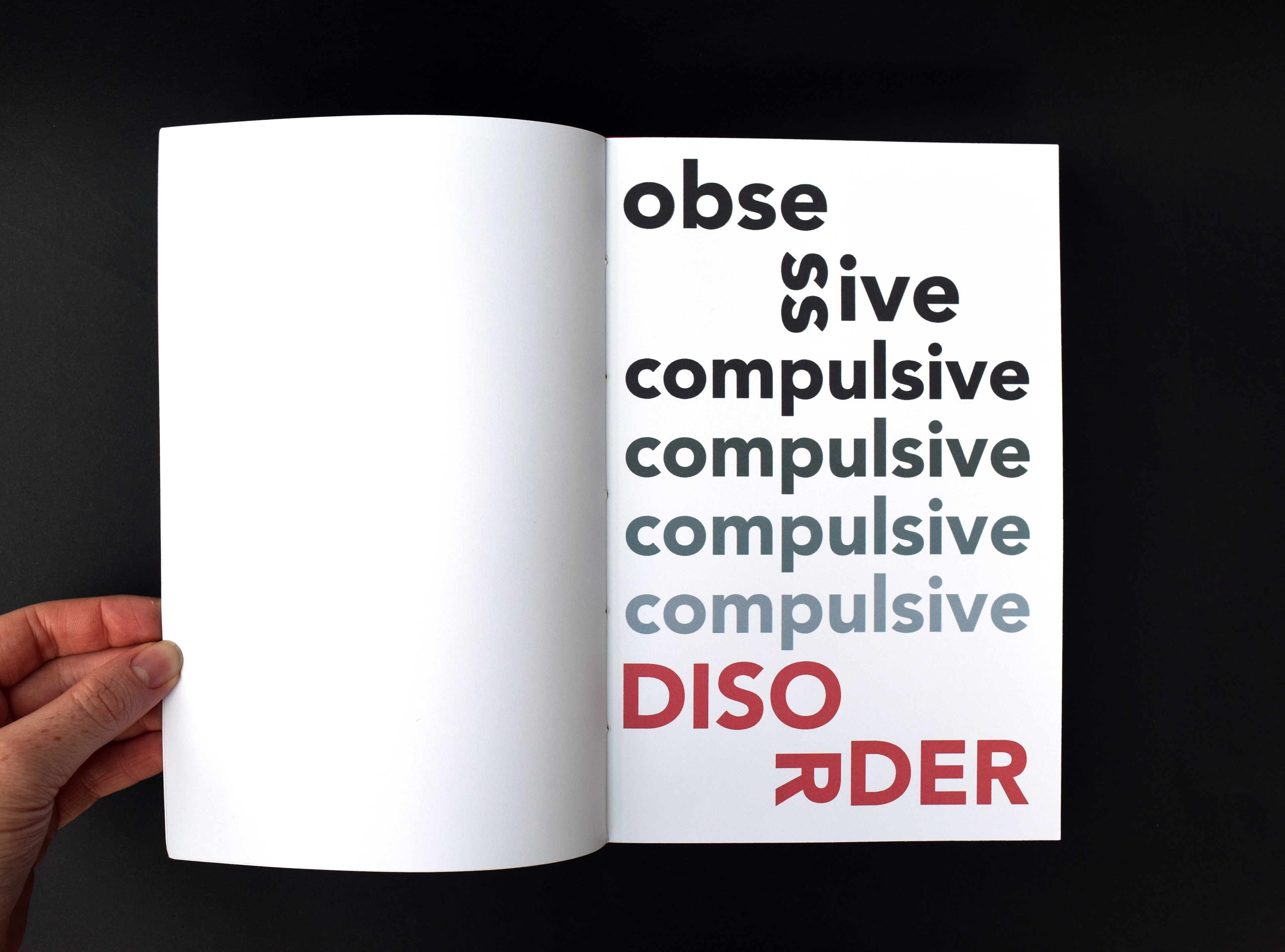
Inside cover page

Contents page
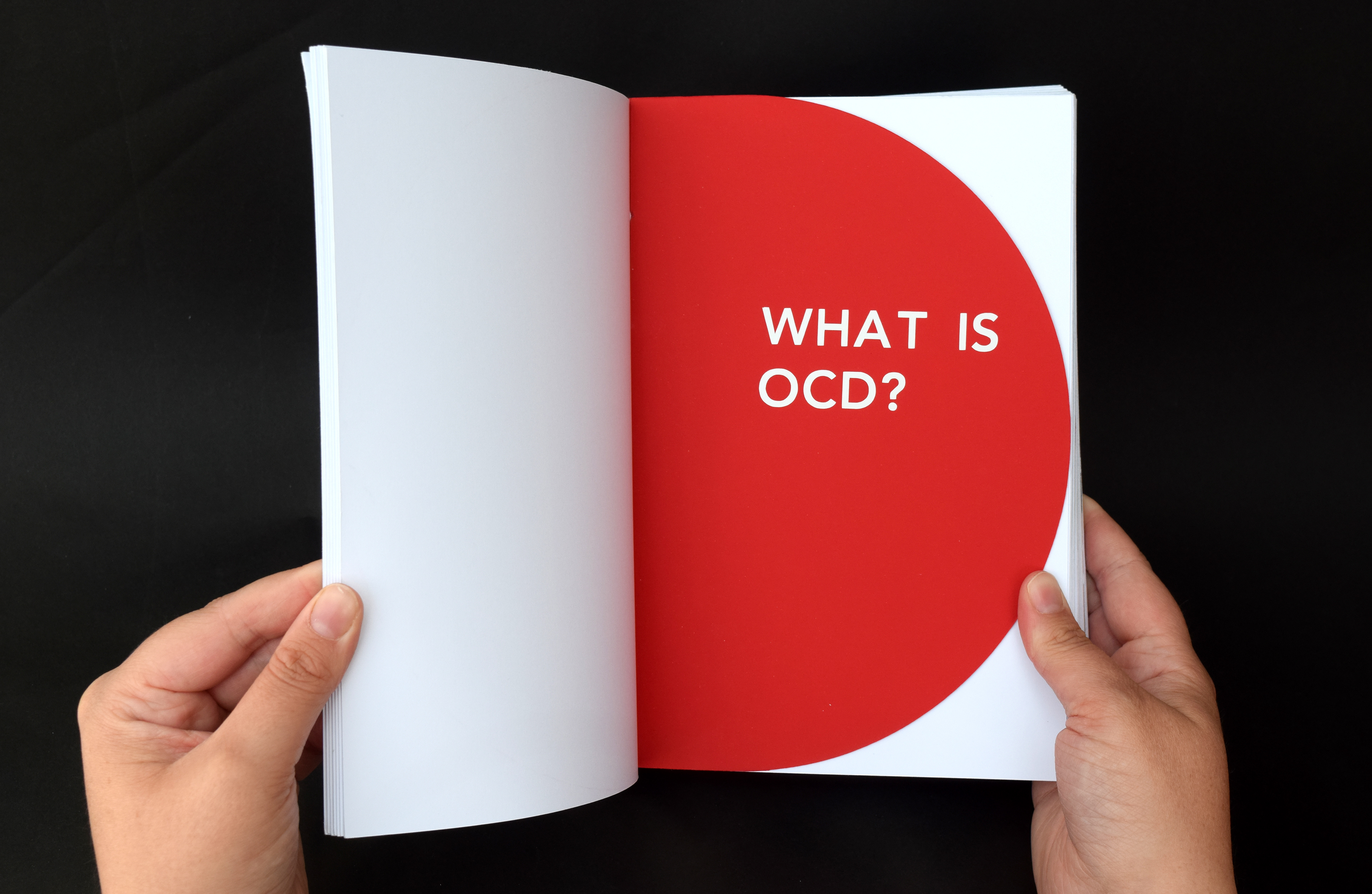
What is OCD? - Red insert
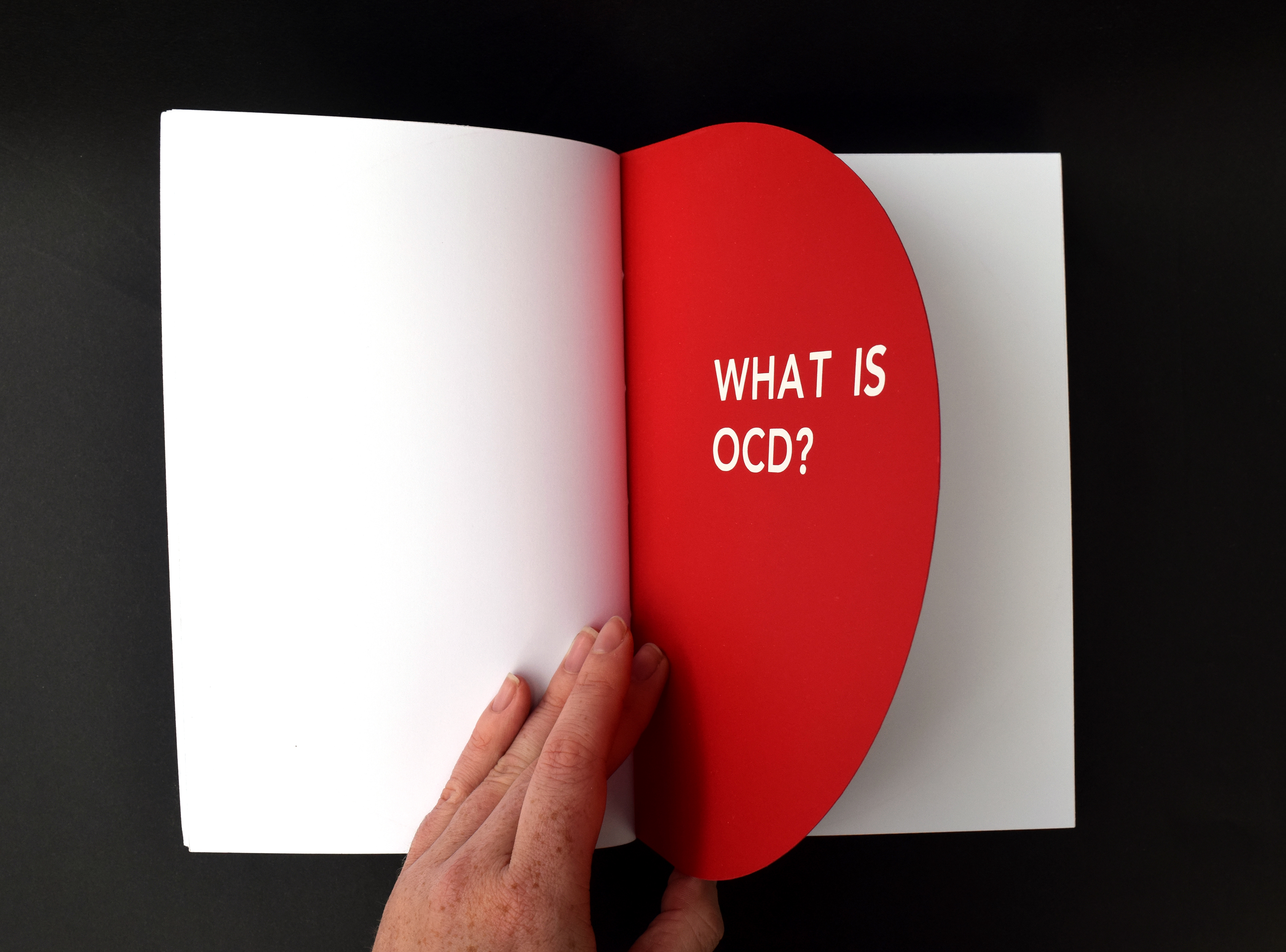
Highlighting how the red insert works within the book
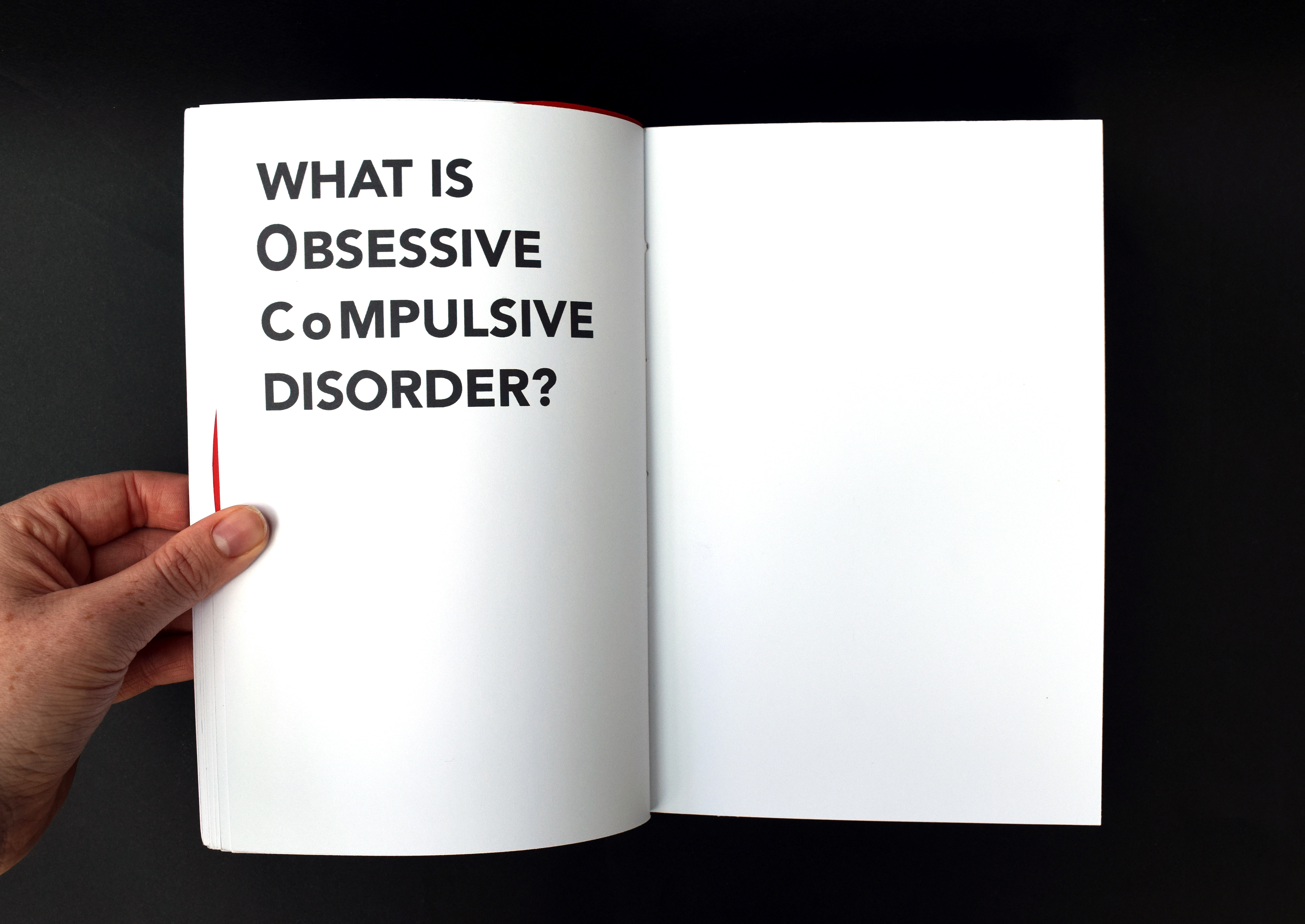
What is Obsessive Compulsive Disorder? - Title page
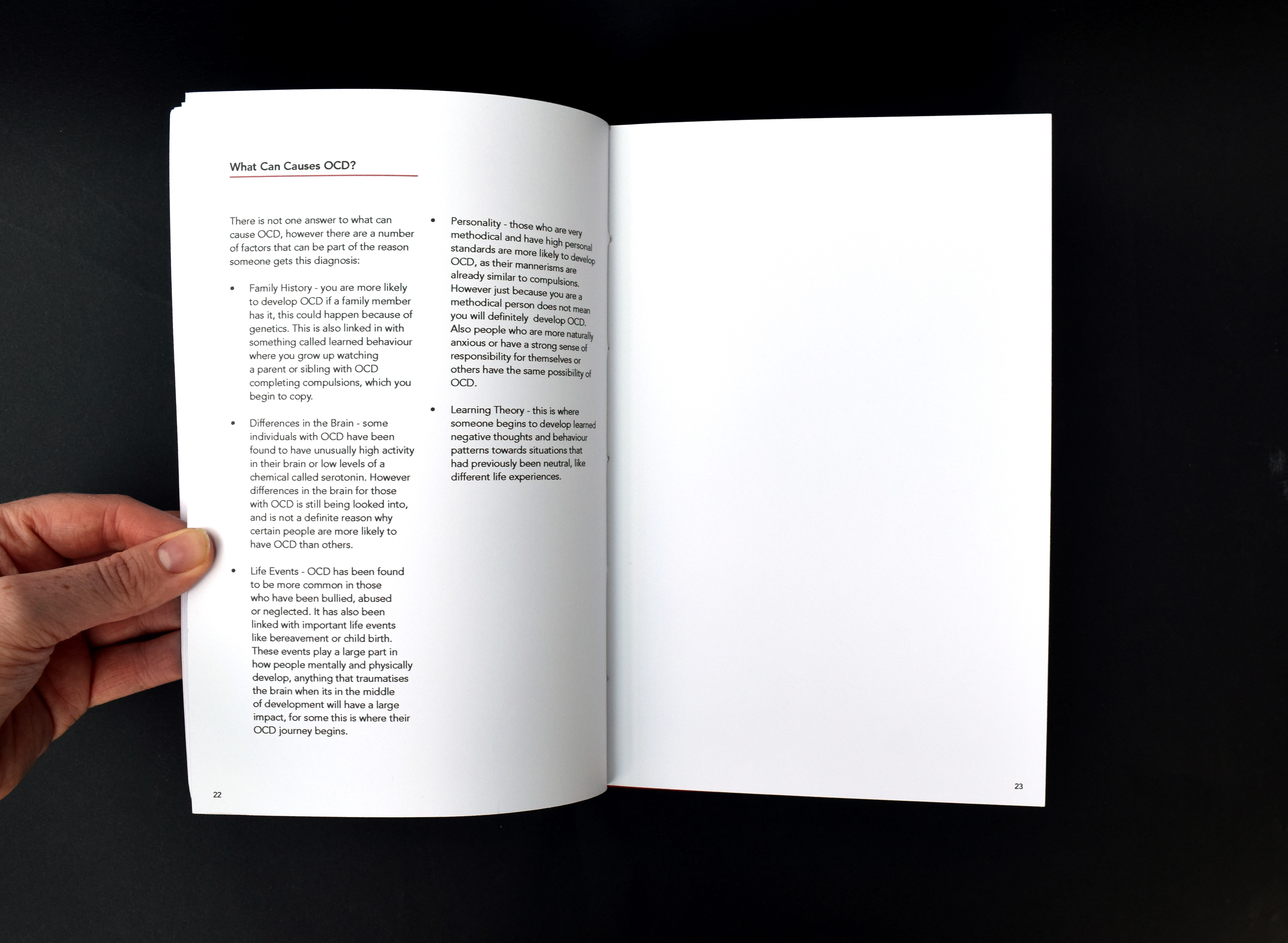
What can cause OCD?
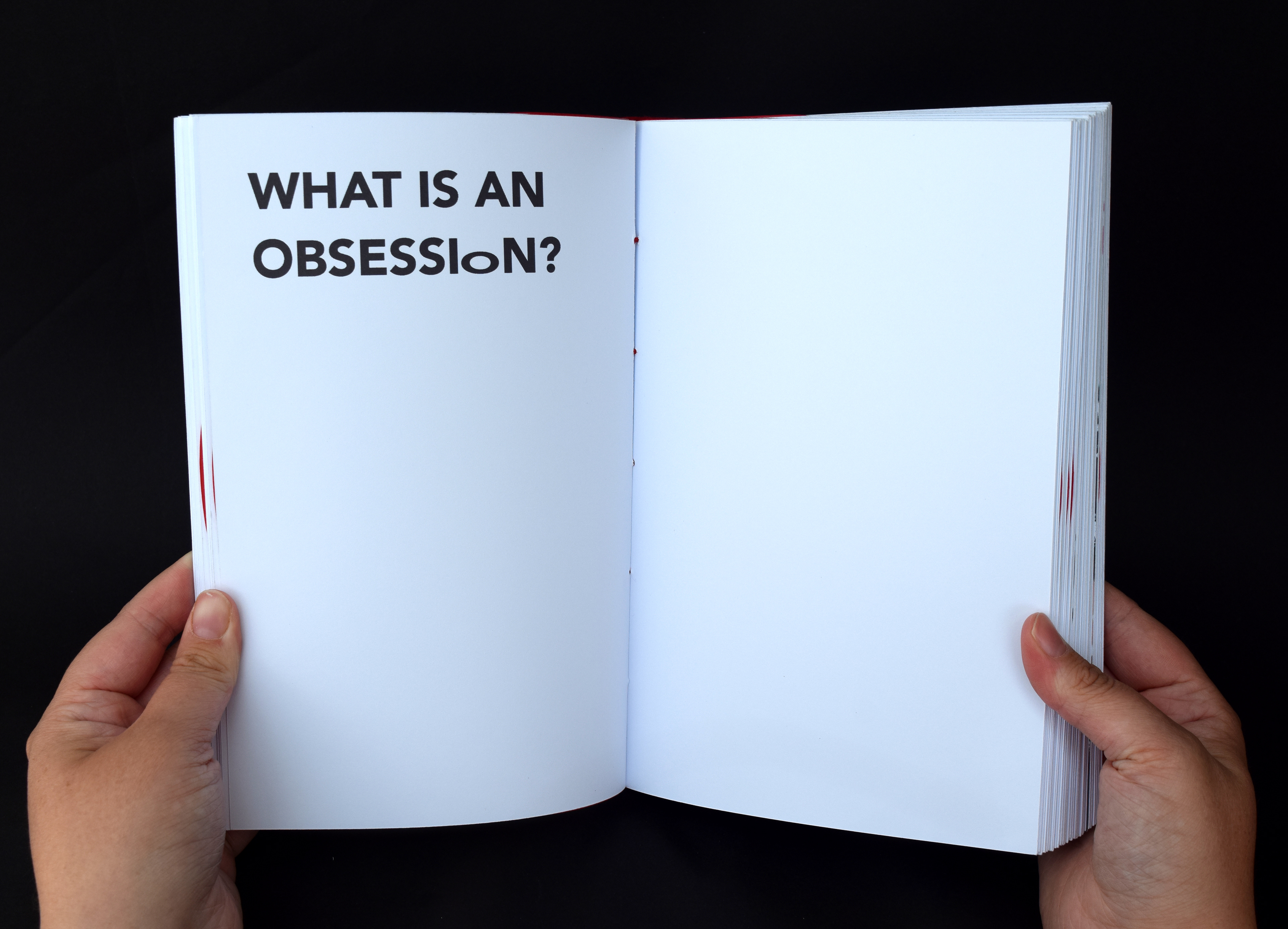
What is an Obsession? - Title page
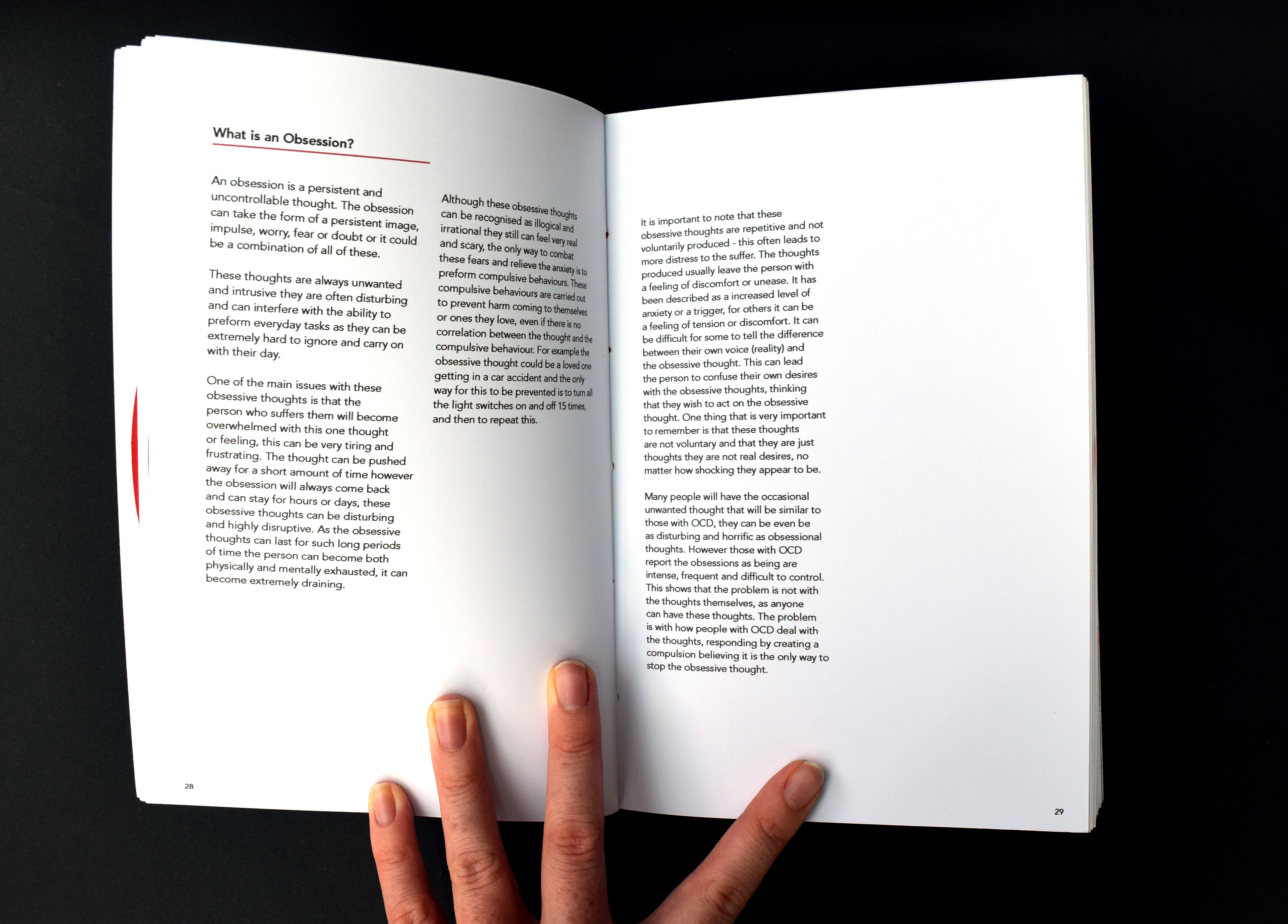
What is an Obsession?
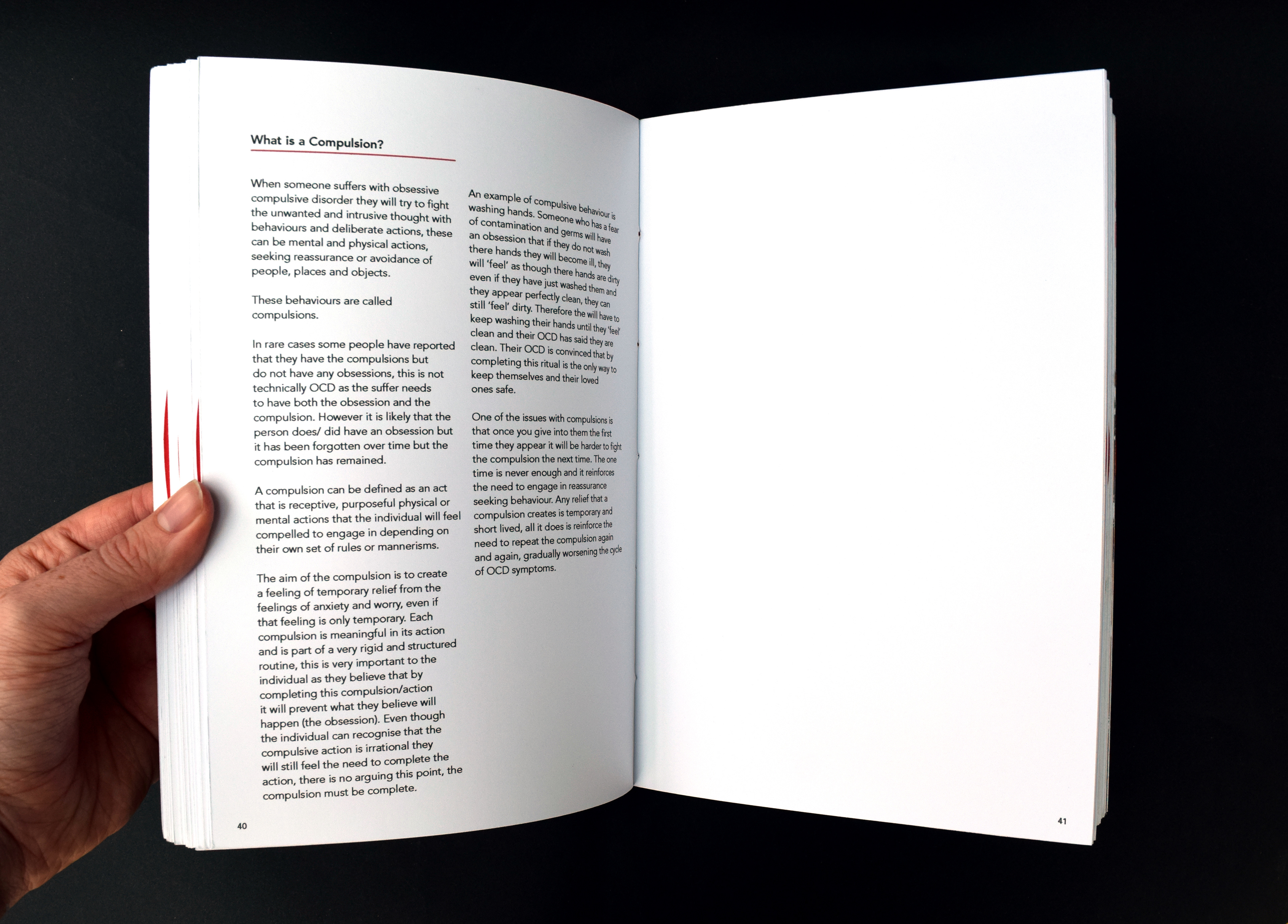
What is a Compulsion?

Examples of Obsessions
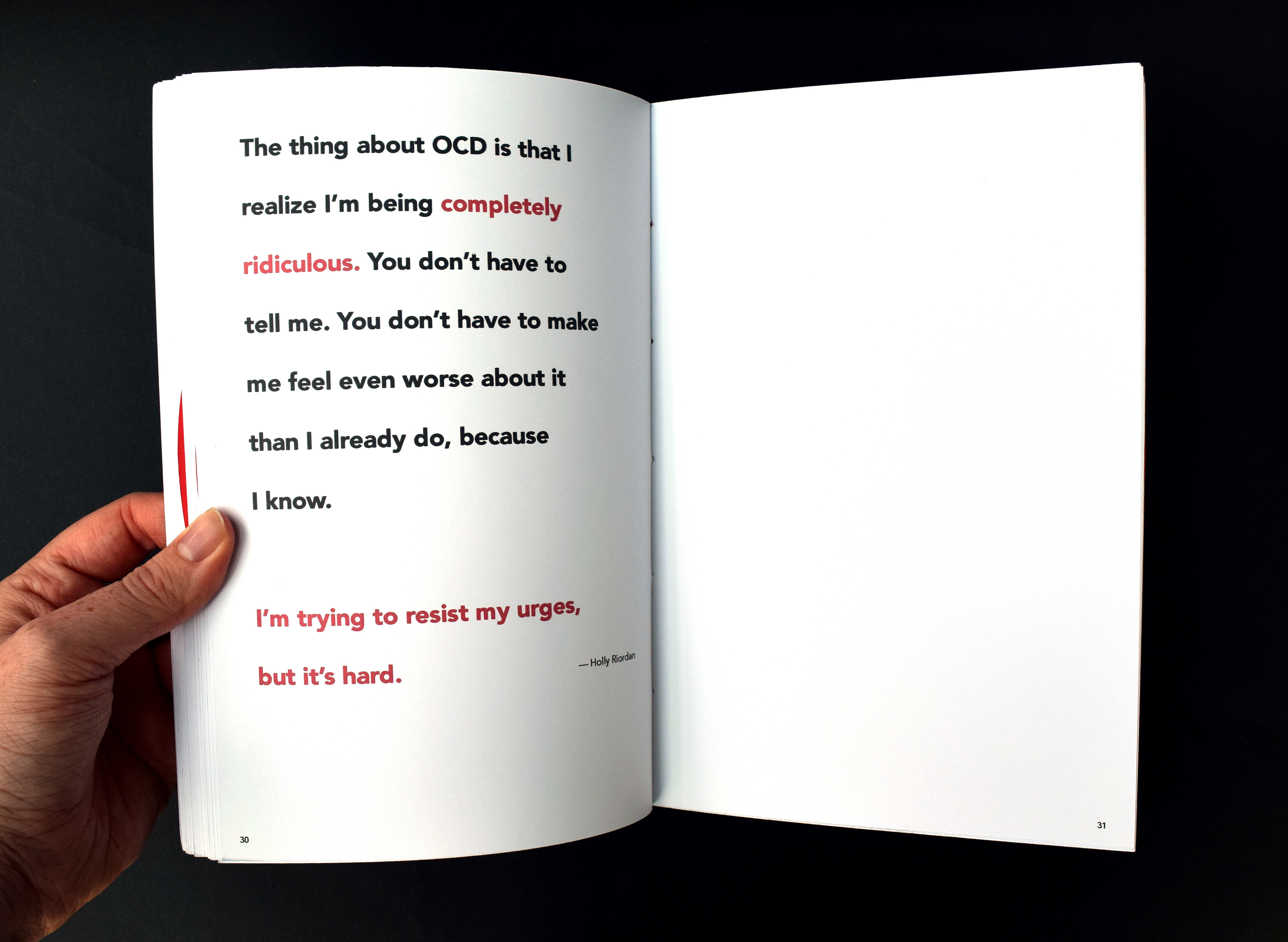
Quote by Holly Riordan
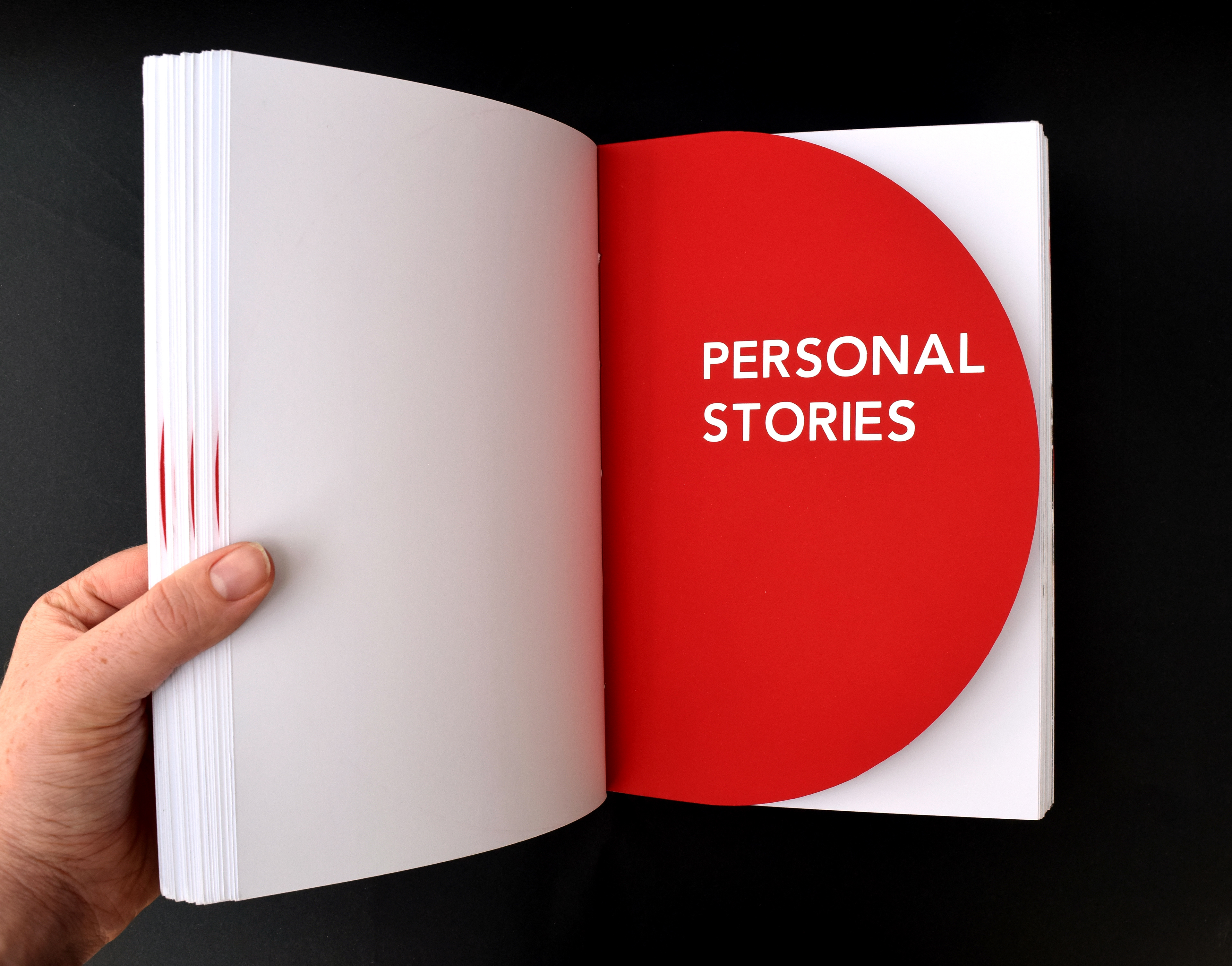
Personal stories - Red insert
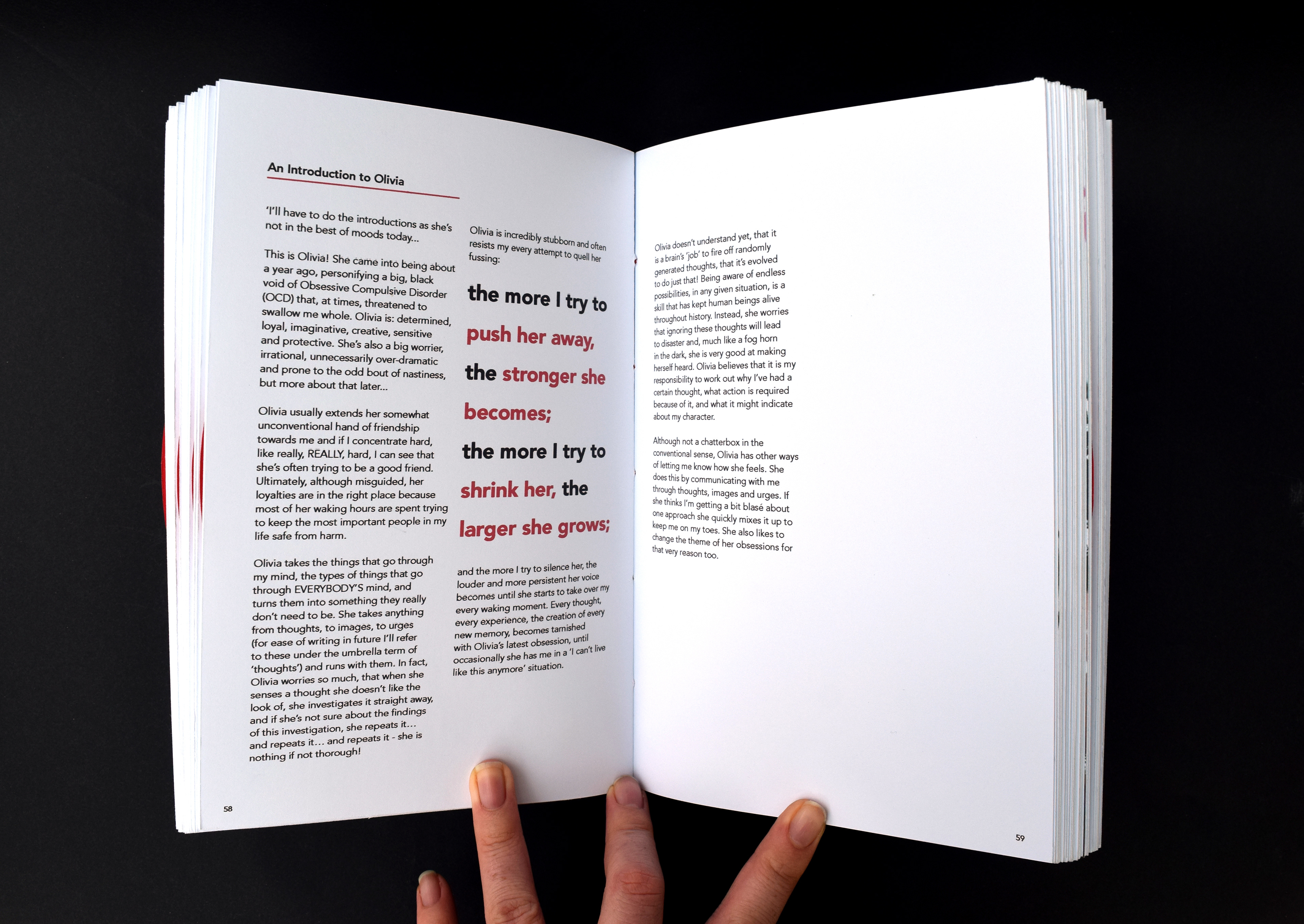
An introduction to Olivia
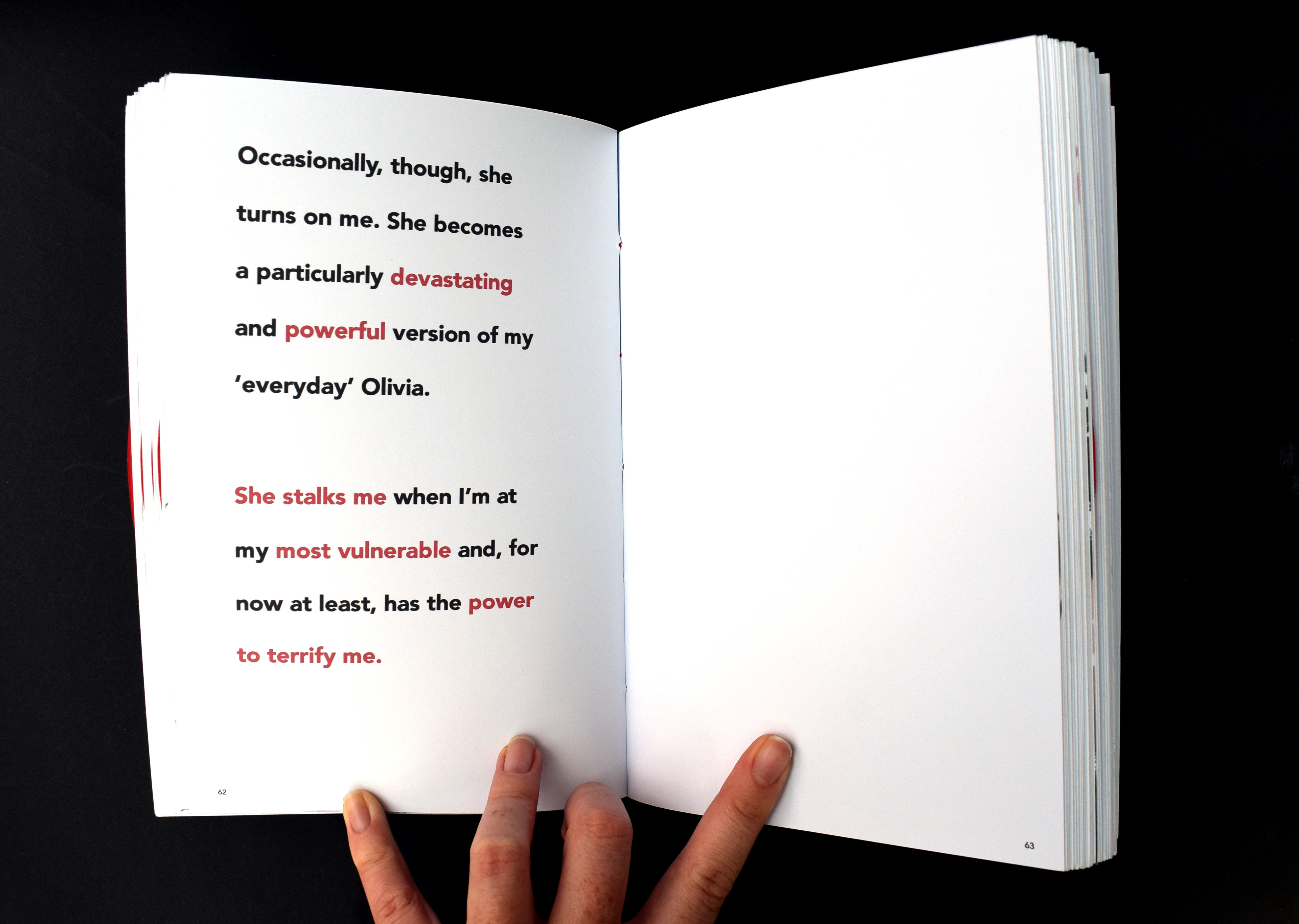
Olivia's Story

The Unbelievable Hangover caused by Pure-O
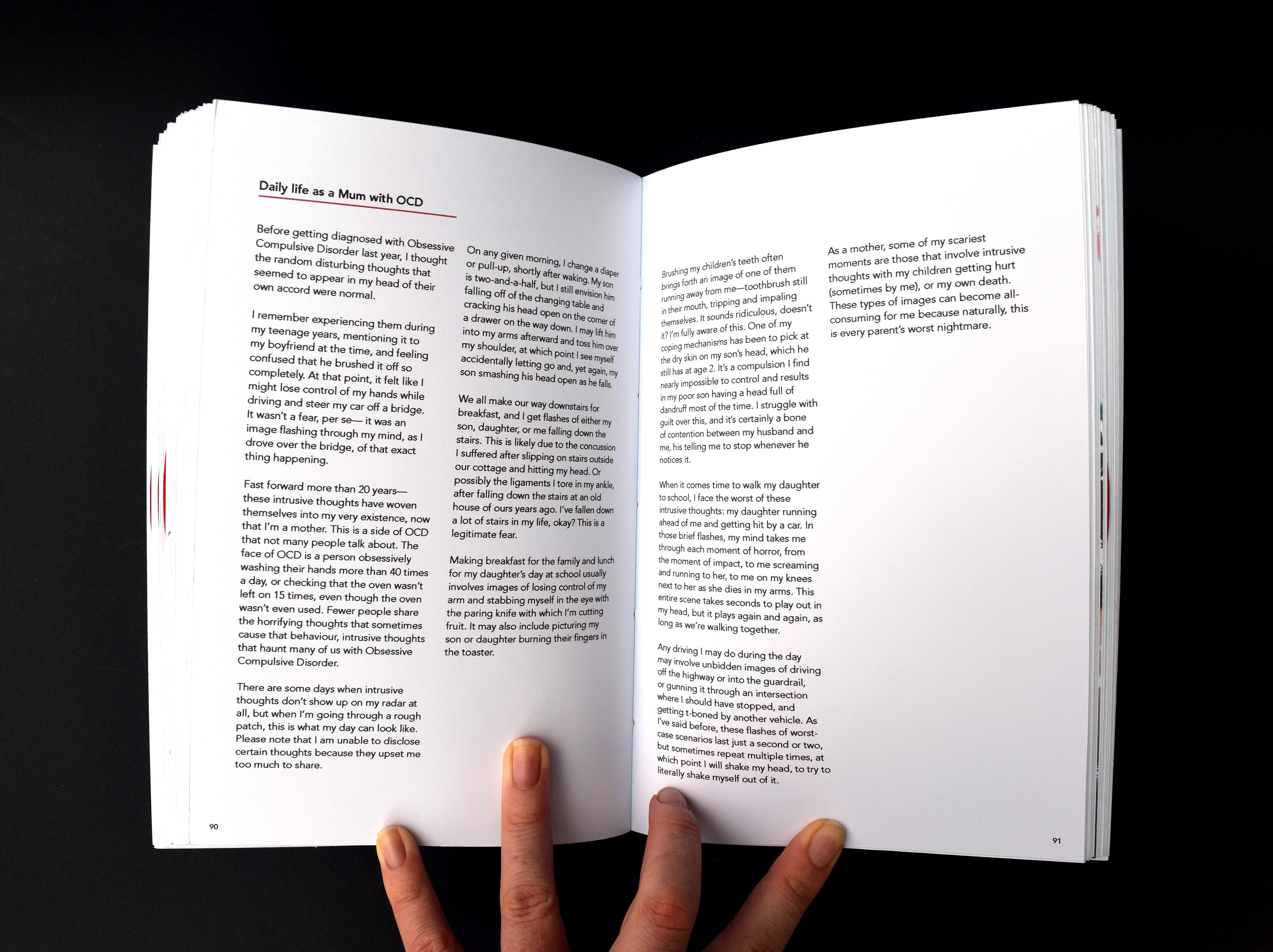
A Day with OCD, As A Mother

Getting Help - Red insert
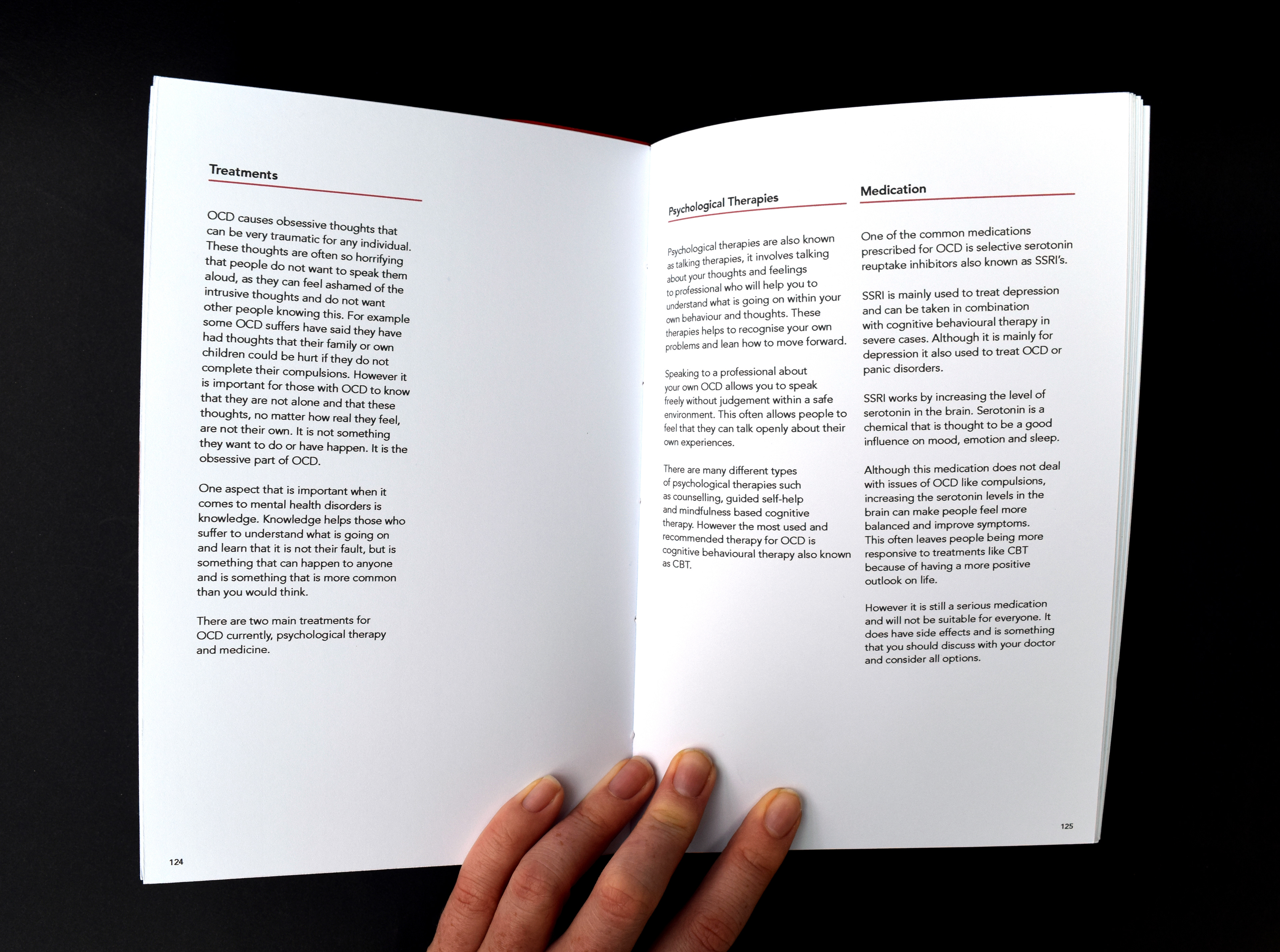
Treatments
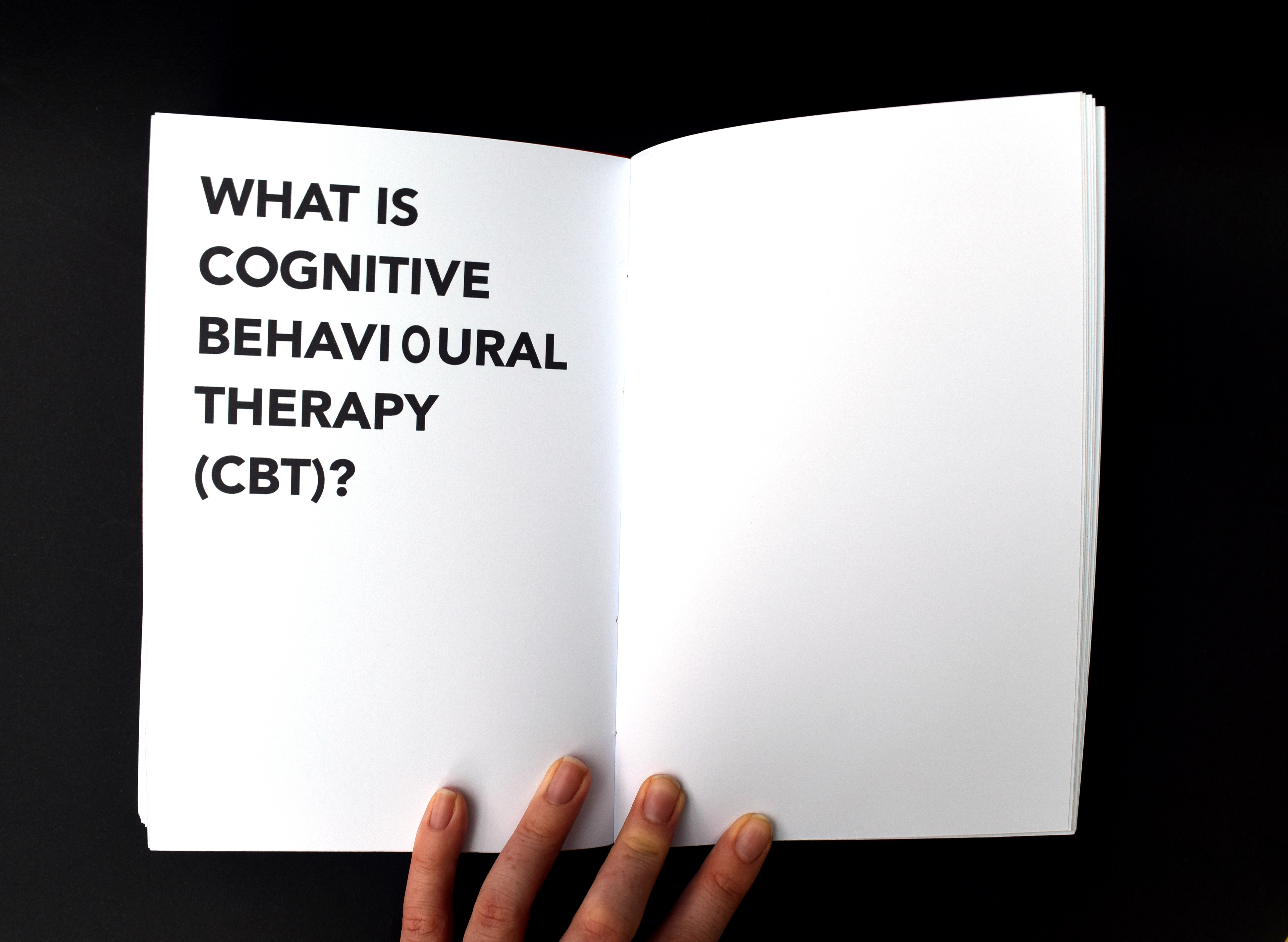
What is Cognitive Behavioural Therapy? - Title page
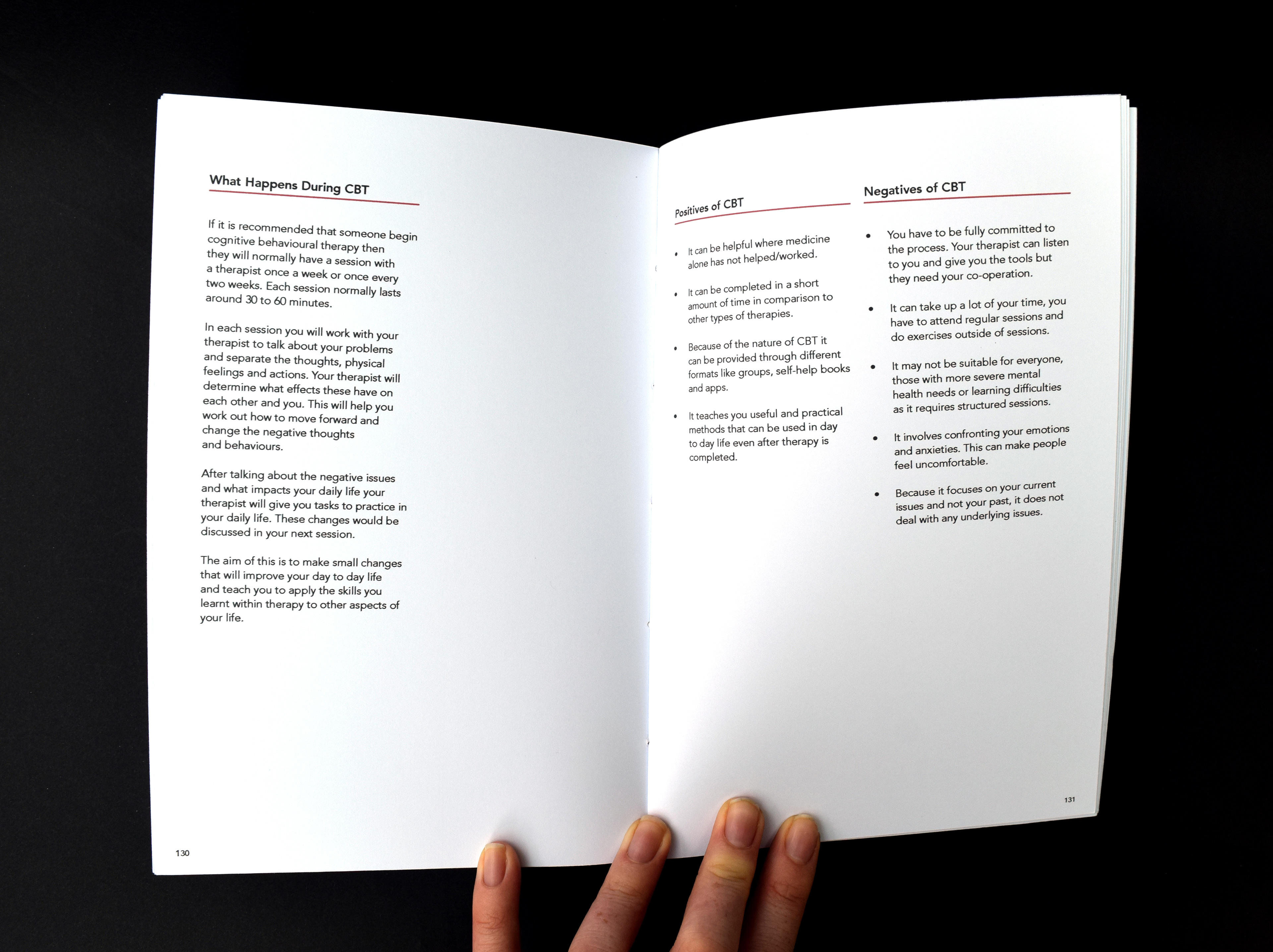
What is CBT? Positives & Negatives
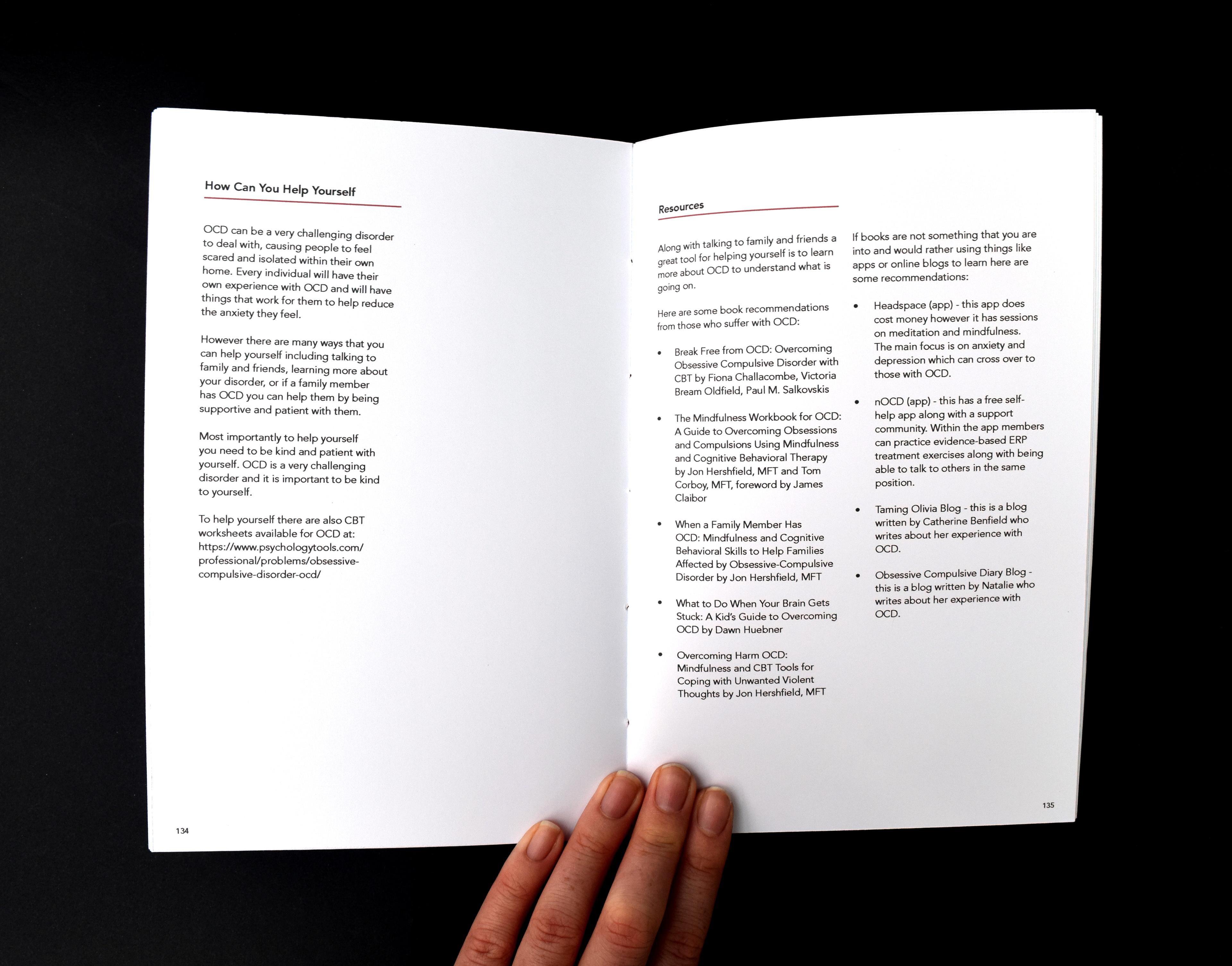
How can you help yourself?

